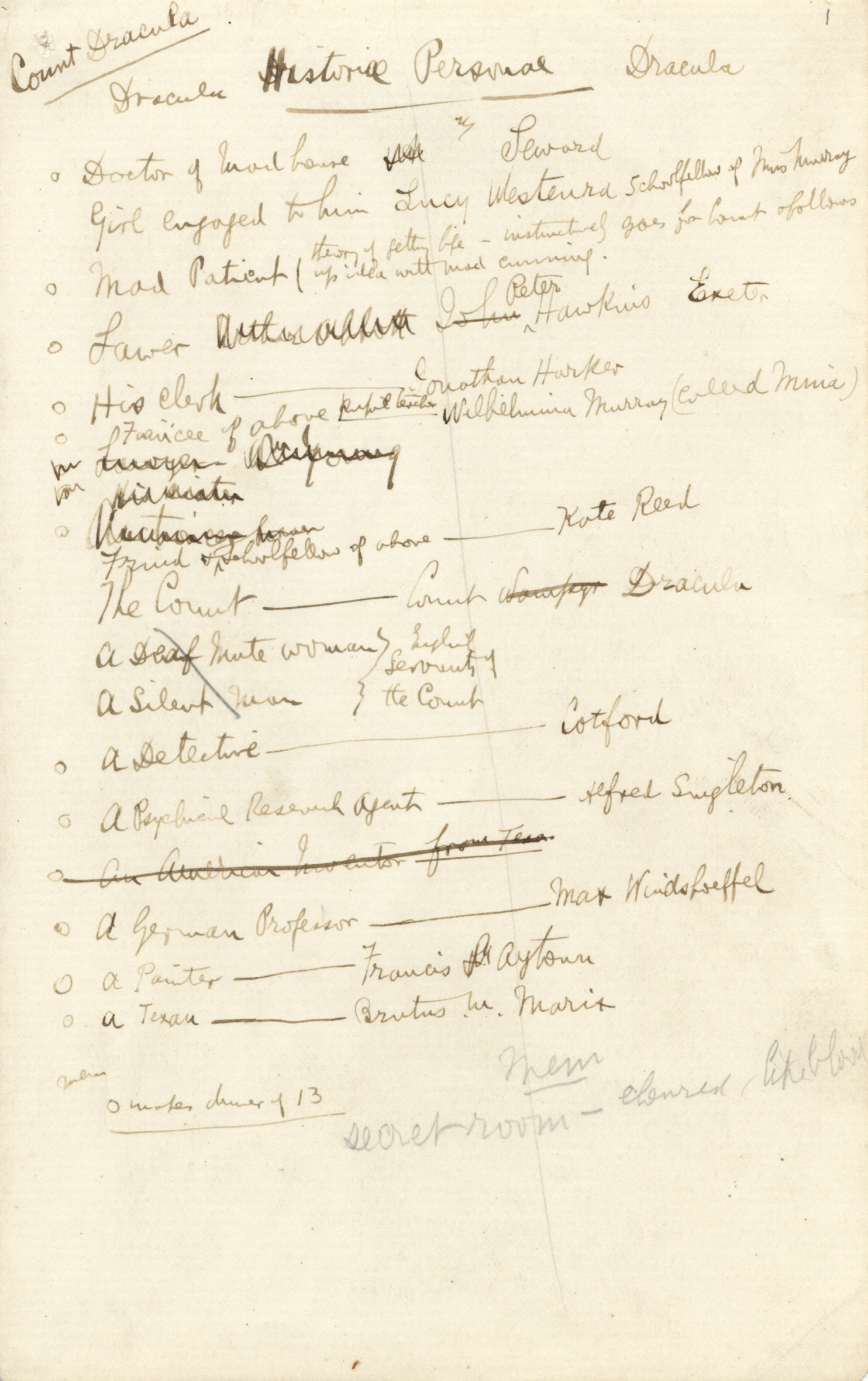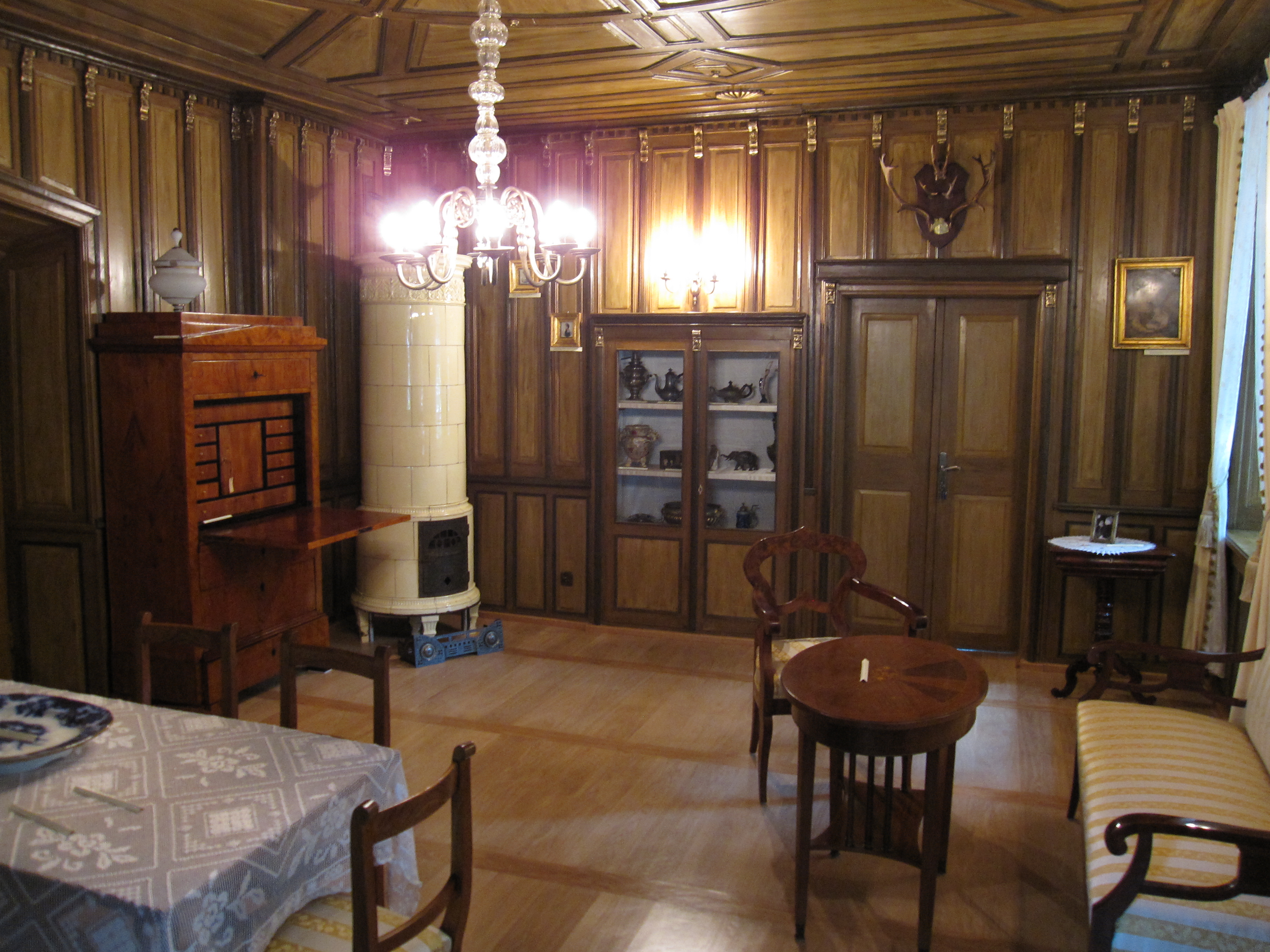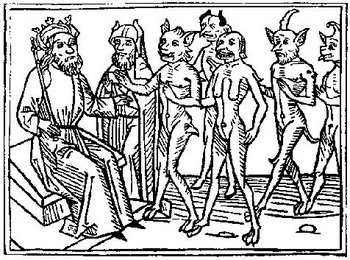|
Count Orlok
Count Orlok (; ; ) is a fictional character who first appeared in the silent film ''Nosferatu'' (1922) directed by F. W. Murnau. Based on Bram Stoker's Count Dracula, he is played by German actor Max Schreck, and is depicted as a repulsive vampire descended from Belial, who leaves his homeland of Transylvania to spread the plague in the idyllic city of Wisborg in Biedermeier-period Germany, only to find death at the hands of a self-sacrificing woman. Count Orlok would reappear in subsequent remakes, played by Klaus Kinski, Doug Jones and Bill Skarsgård, as well as in comic book adaptations and sequels. He is also a character in ''SpongeBob SquarePants'', debuting in the season 2 episode " Graveyard Shift". Orlok's distinct appearance, which is closer to that of vampires of Eastern European folklore than to traditional depictions of Dracula, influenced numerous later vampire designs, including those of '' Salem's Lot'', ''Buffy the Vampire Slayer'' and the ''Blade'' film ... [...More Info...] [...Related Items...] OR: [Wikipedia] [Google] [Baidu] |
Nosferatu
''Nosferatu: A Symphony of Horror'' () is a 1922 silent film, silent German Expressionism (cinema), German Expressionist vampire film directed by F. W. Murnau from a screenplay by Henrik Galeen. It stars Max Schreck as Count Orlok, a vampire who preys on the wife (Greta Schröder) of his estate agent (Gustav von Wangenheim) and brings the Plague (disease), plague to their town. ''Nosferatu'' was produced by Prana Film and is an unauthorized adaptation of Bram Stoker's 1897 novel ''Dracula''. Various names and other details were changed from the novel, including Count Dracula being renamed Count Orlok. Although those changes are often represented as a defense against copyright infringement accusations, the original German intertitles acknowledged ''Dracula'' as the source. Film historian David Kalat states in his commentary track that since the film was "a low-budget film made by Germans for German audiences... setting it in Germany with German-named characters makes the story mor ... [...More Info...] [...Related Items...] OR: [Wikipedia] [Google] [Baidu] |
Vampire
A vampire is a mythical creature that subsists by feeding on the Vitalism, vital essence (generally in the form of blood) of the living. In European folklore, vampires are undead, undead humanoid creatures that often visited loved ones and caused mischief or deaths in the neighbourhoods which they inhabited while they were alive. They wore shrouds and were often described as bloated and of ruddy or dark countenance, markedly different from today's gaunt, pale vampire which dates from the early 19th century. Vampiric entities have been Vampire folklore by region, recorded in cultures around the world; the term ''vampire'' was popularized in Western Europe after reports of an 18th-century mass hysteria of a pre-existing folk belief in Southeast Europe, Southeastern and Eastern Europe that in some cases resulted in corpses being staked and people being accused of vampirism. Local variants in Southeastern Europe were also known by different names, such as ''shtriga'' in Albanian ... [...More Info...] [...Related Items...] OR: [Wikipedia] [Google] [Baidu] |
Dracula
''Dracula'' is an 1897 Gothic fiction, Gothic horror fiction, horror novel by Irish author Bram Stoker. The narrative is Epistolary novel, related through letters, diary entries, and newspaper articles. It has no single protagonist and opens with solicitor Jonathan Harker taking a business trip to stay at the castle of a Transylvanian nobleman, Count Dracula. Harker flees after learning that Dracula is a vampire, and the Count moves to England and plagues the seaside town of Whitby. A small group, led by Abraham Van Helsing, hunts and kills him. The novel was mostly written in the 1890s, and Stoker produced over a hundred pages of notes, drawing extensively from Folklore of Romania, folklore and History of Romania, history. Scholars have suggested various figures as the inspiration for Dracula, including the Wallachian prince Vlad the Impaler and the Countess Elizabeth Báthory, but recent scholarship suggests otherwise. He probably found the name Dracula in Whitby's public l ... [...More Info...] [...Related Items...] OR: [Wikipedia] [Google] [Baidu] |
Blade (franchise)
''Blade'' is an American superhero film, superhero horror film and television franchise based on the Marvel Comics Blade (comics), character of the same name, starring Wesley Snipes as Blade (New Line franchise character), Blade in the film trilogy, and Sticky Fingaz in the Blade: The Series, television series. The trilogy was directed by Stephen Norrington, Guillermo del Toro and David S. Goyer, the latter of whom also wrote the films and created the television series. The original films and television series were distributed by New Line Cinema from 1998 to 2006. The character was created in 1973 for Marvel Comics by writer Marv Wolfman and artist Gene Colan as a supporting character in the 1970s comic ''The Tomb of Dracula''. In the comic, Blade's mother was bitten by a vampire while she was in labor with Blade, rendering him immune to being turned into a vampire; following the release of the 1998 film ''Blade (1998 film), Blade'', the character was retroactively made into a dha ... [...More Info...] [...Related Items...] OR: [Wikipedia] [Google] [Baidu] |
Buffy The Vampire Slayer
''Buffy the Vampire Slayer'' is an American supernatural fiction, supernatural drama television series created by writer and director Joss Whedon. The concept is based on the Buffy the Vampire Slayer (film), 1992 film, also written by Whedon, although they are separate and unrelated productions. Whedon served as executive producer and showrunner of the series under his production tag Mutant Enemy Productions. It premiered on March 10, 1997, on The WB and concluded on May 20, 2003, on UPN. The series follows Buffy Summers (played by Sarah Michelle Gellar), the latest in a succession of young women known as "Vampire Slayer (Buffy the Vampire Slayer), Slayers". Slayers are chosen by fate to battle against vampires, demons and other forces of darkness. Buffy wants to live a normal life, but learns to embrace her destiny as the series progresses. Like previous Slayers, she is aided by a Watcher (Buffy the Vampire Slayer), Watcher, who guides, teaches and trains her. Unlike her predec ... [...More Info...] [...Related Items...] OR: [Wikipedia] [Google] [Baidu] |
Salem's Lot (1979 Miniseries)
''Salem's Lot'' (also known as ''Salem's Lot: The Movie'', ''Salem's Lot: The Miniseries'' and ''Blood Thirst'') is a 1979 American two-part vampire miniseries based on the 1975 horror novel '''Salem's Lot'' by Stephen King. Directed by Tobe Hooper and starring David Soul and James Mason, the plot concerns a writer who returns to his hometown and discovers that its citizens are turning into vampires. After Warner Bros. acquired the rights to ''Salem's Lot'', several filmmakers developed screenplays but none proved satisfactory. Producer Richard Kobritz decided that, due to the novel's length, ''Salem's Lot'' would work better as a television miniseries than as a feature film. He and screenwriter Paul Monash followed the general outline of King's novel but changed some elements, including turning the head vampire Kurt Barlow from a cultured human-looking villain into a speechless demonic-looking monster. With a budget of $4 million, principal photography began on July 10, 1979 ... [...More Info...] [...Related Items...] OR: [Wikipedia] [Google] [Baidu] |
Graveyard Shift (SpongeBob SquarePants)
"Graveyard Shift" is the first part of the 16th episode of the second season, and the 36th episode overall, of the American animated television series ''SpongeBob SquarePants''. The episode was written by Mr. Lawrence, Jay Lender and Dan Povenmire, and the animation was directed by Sean Dempsey. Lender and Povenmire also served as storyboard directors. The episode was copyrighted in 2001 and aired on Nickelodeon in the United States on September 6, 2002. In the episode, Squidward and SpongeBob are forced to work 24 hours a day by their boss Mr. Krabs. Squidward soon becomes bored, and tells SpongeBob a ghost story to scare him off the night shift. When SpongeBob begins to panic, Squidward tells him that the story is fictional. However, later that night, the events of the story begin to occur. The episode featured stock footage of Max Schreck as Count Orlok from the 1922 silent film '' Nosferatu''. Episode writer Lender proposed the idea as a gag at the end of the epis ... [...More Info...] [...Related Items...] OR: [Wikipedia] [Google] [Baidu] |
SpongeBob SquarePants Season 2
The second season of the American animated television series ''SpongeBob SquarePants'', created by Stephen Hillenburg, aired on Nickelodeon from October 20, 2000, to July 26, 2003, and consists of 20 half-hour episodes. The series chronicles the exploits and adventures of the title character and his various friends in the fictional underwater city of Bikini Bottom. The season was executive produced by series creator Hillenburg, who also acted as the showrunner. During the season's run, ''SpongeBob SquarePants'' became Nickelodeon's 2 children's program, behind ''Rugrats''. Nearly 40 percent of ''SpongeBob''s audience of 2.2 million were aged 18 to 34. The show also found financial success in merchandising, having signed marketing deals with various retail companies. In 2002, the show was nominated at the Primetime Emmy Awards for Outstanding Children's Program. Tom Kenny and Mary Jo Catlett were individually nominated at the 29th Annie Awards for their voice performances as ... [...More Info...] [...Related Items...] OR: [Wikipedia] [Google] [Baidu] |
Biedermeier
The Biedermeier period was an era in Central European art and culture between 1815 and 1848 during which the middle classes grew in number and artists began producing works appealing to their sensibilities. The period began with the end of the Napoleonic Wars in 1815 and ended with the onset of the Revolutions of 1848. The term originated in popular literature, before spreading to architecture, interior design, and visual arts. "Biedermeier" derives from the fictional mediocre poet Gottlieb Biedermaier, who featured in the Munich magazine ''Fliegende Blätter'' (''Flying Leaves''). It is used mostly to denote the unchallenging artistic styles that flourished in the fields of literature, music, the visual arts and interior design. As is natural in cultural creative movements, ''Biedermeier'' has influenced later styles. Political background The ''Biedermeier'' period does not refer to the era as a whole, but to a particular mood and set of trends that grew out of the unique ... [...More Info...] [...Related Items...] OR: [Wikipedia] [Google] [Baidu] |
Plague (disease)
Plague is an infectious disease caused by the bacterium '' Yersinia pestis''. Symptoms include fever, weakness and headache. Usually this begins one to seven days after exposure. There are three forms of plague, each affecting a different part of the body and causing associated symptoms. Pneumonic plague infects the lungs, causing shortness of breath, coughing and chest pain; bubonic plague affects the lymph nodes, making them swell; and septicemic plague infects the blood and can cause tissues to turn black and die. The bubonic and septicemic forms are generally spread by flea bites or handling an infected animal, whereas pneumonic plague is generally spread between people through the air via infectious droplets. Diagnosis is typically by finding the bacterium in fluid from a lymph node, blood or sputum. Those at high risk may be vaccinated. Those exposed to a case of pneumonic plague may be treated with preventive medication. If infected, treatment is with antibiotics a ... [...More Info...] [...Related Items...] OR: [Wikipedia] [Google] [Baidu] |
Transylvania
Transylvania ( or ; ; or ; Transylvanian Saxon dialect, Transylvanian Saxon: ''Siweberjen'') is a List of historical regions of Central Europe, historical and cultural region in Central Europe, encompassing central Romania. To the east and south its natural border are the Carpathian Mountains and to the west the Apuseni Mountains. Broader definitions of Transylvania also include the western and northwestern Romanian regions of Crișana and Maramureș, and occasionally Banat. Historical Transylvania also includes small parts of neighbouring Western Moldavia and even a small part of south-western neighbouring Bukovina to its north east (represented by Suceava County). Transylvania is known for the scenery of its Carpathian landscape and its rich history, coupled with its multi-cultural character. It also contains Romania's second-largest city, Cluj-Napoca, and other very well preserved medieval iconic cities and towns such as Brașov, Sibiu, Târgu Mureș, Bistrița, Alba Iuli ... [...More Info...] [...Related Items...] OR: [Wikipedia] [Google] [Baidu] |
Belial
Belial (; , ''Bəlīyyaʿal'') is a term occurring in the Hebrew Bible/Old Testament which later became personified as the devilSee the reference to "Beliar" in ''The Ascension of Isaiah'', at EarlyChristianWritings.com', specifically at 1:8–9, 2:4, 3:11–13, 4:2, 4:14–18, 5:1, 5:15. in Christian texts of the New Testament. Alternate spellings include Baalial, Balial, Belhor, Beliall, Beliar, Berial, Bylyl and Beliya'al. Early usage of ''Belial'' referred to "wickedness" or "worthlessness", occurring several times in the Old Testament. Later, in the Dead Sea Scrolls (c. 300 BCE), Belial was personified as a demon. In the Secret Book of John, an early Gnostic text, the ruler of the underworld is referred to as Belias. Hebrew Bible/Old Testament ''Belial'' is a Hebrew word "used to characterize the wicked or worthless". The etymology of the word is often understood as "lacking worth", from two common words: ''beli-'' (בְּלִי "without-") and ''ya'al'' (יָעַל "t ... [...More Info...] [...Related Items...] OR: [Wikipedia] [Google] [Baidu] |










